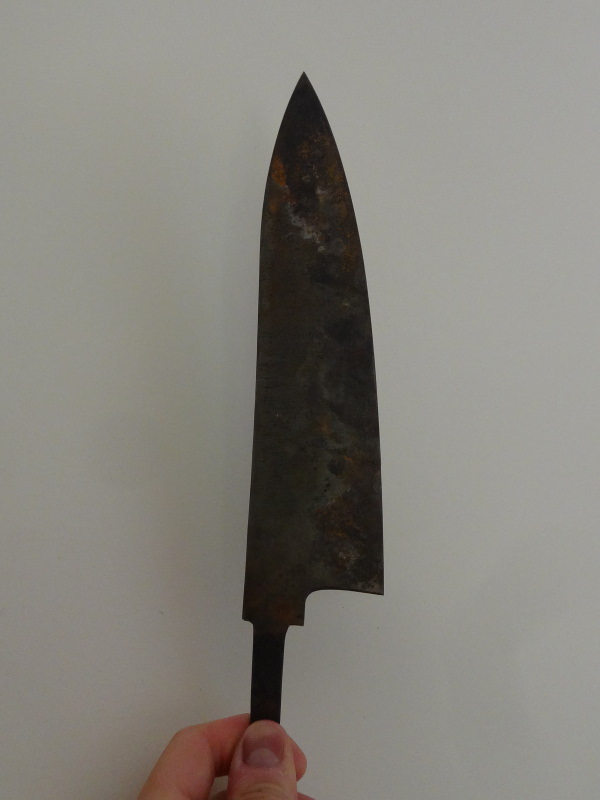TEWNCfarms
Senior Member
- Joined
- Apr 12, 2018
- Messages
- 488
- Reaction score
- 4
So in traditional samurai swords it is straight and when they quench it for the last time it bends at a unique place, any knives like this!?

Ya you will not find honyaki with sori for less than $1000 IMO
Sorry I dont know of any available. Expect 300 to not cover it though(that one was a little more than 1k I think)
Honyaki is deferentially heat treated steel, often characterized by a hamon or the different texture/colored pattern. Katana is much softer in construction and its heat treating, and since the swords are much thicker at the spine than a kitchen knife and shorter from spine to edge than most honyaki gyuto, the sori and quenching fail rate is much lower I would think. Gyutos being thin and tall and very hard the fail rate for a standard honyaki is high, but a purposeful sori would be very hard to accomplish I would think.
Whats a sori?
Thanks so much!
Thanks Ill have to look that up!I do believe that sakimaru does come with the curved mune(spine) Whether it comes from the hammering, i am not too sure. But its a possibility as a tamahagane sword is sanmai construction; core is slightly softer steel and the outer layer is hard with the differential hardening with the hamon much closer to the edge...
As to a honyaki having the curve due to the quench, i have doubts as it is not of sanmai construction
I stand to be corrected..
Z
Thanks so much!
Thanks Ill have to look that up!
Yeah Im not worried about it being honyaki I just am looking for one in general with a quenched sori.
Haha whats sanmai?
Sandwich construction. Core steel sandwiched between cladding. Common way to make a lot of Japanese kitchen knives.
Man thats beautiful! Id love to have that!Mert Tansu made a "Cow Sword" which was curved: http://www.kitchenknifeforums.com/showthread.php?t=33837
Not sure if he forged it that way or if it came out of the quench like that.
I don't know that anyone said it was special, although I personally think it is a very beautiful blade.Whats so special about it?
Ahhh.. I see. You are saying to the OP that this is what you get when you drop a couple gramd on a knife.
Whats so special about it?
Ahhh.. I see. You are saying to the OP that this is what you get when you drop a couple gramd on a knife.
It's nice to see you are coming around so quickly :doublethumbsup:Haha Im starting to understand now!
Ive been watching saltys videos and they are really eye opening especially the grind ones, I never realized that one knife could stick and others not, besides single bevel uras
It's nice to see you are coming around so quickly :doublethumbsup:

It's pretty funny that you find a sori attractive. From my humble makers point of view, it's annoying as hell.
Imagine, you take the time to grind a really good side-on profile and get it close to perfect. Then when you go into the next stage, the heat-treat, the blade curves up. Now the profile is a very different shape, the flat of the knife has a curve up and the spine curves up on itself too. We could've ground the knife to look like that if we wanted to, but here it happened out of the plan.
The next time we grind the knife in such a way it predicts the upwards sori, so the knife hooks down and looks a bit retarded before it goes into the quench, then when it curves after coming out, it has warped to the correct shape. What a pain in the ass.

On top of all that, it's also a major cause of cracking during the quench.




Nah it cracked, it's in the trash. :razz:
There are a few knives out there that are ground to look like they have a sori, even if it's kind of faked (as I understand it, a real sori only happens in a differential quench).
Enter your email address to join: